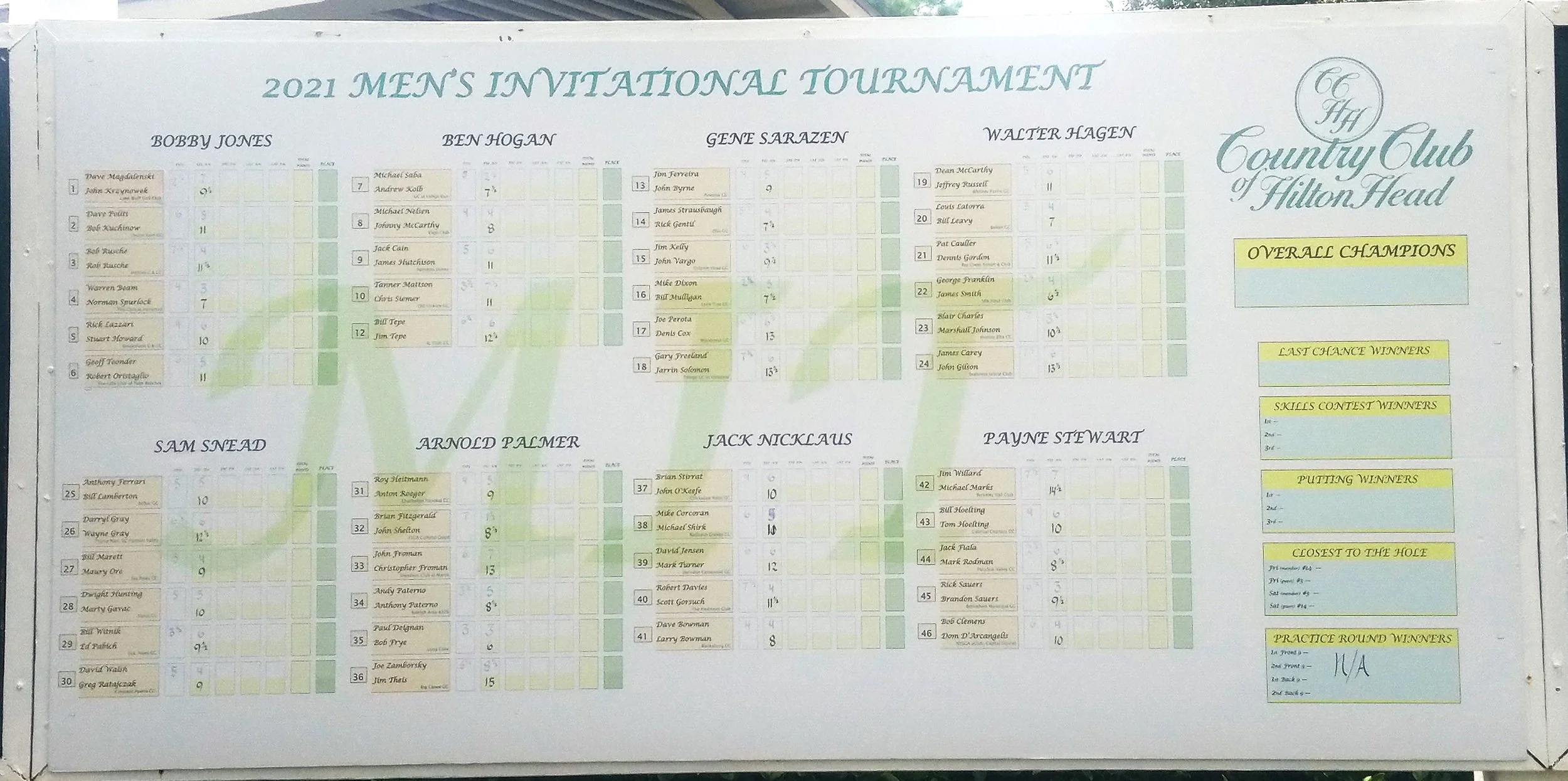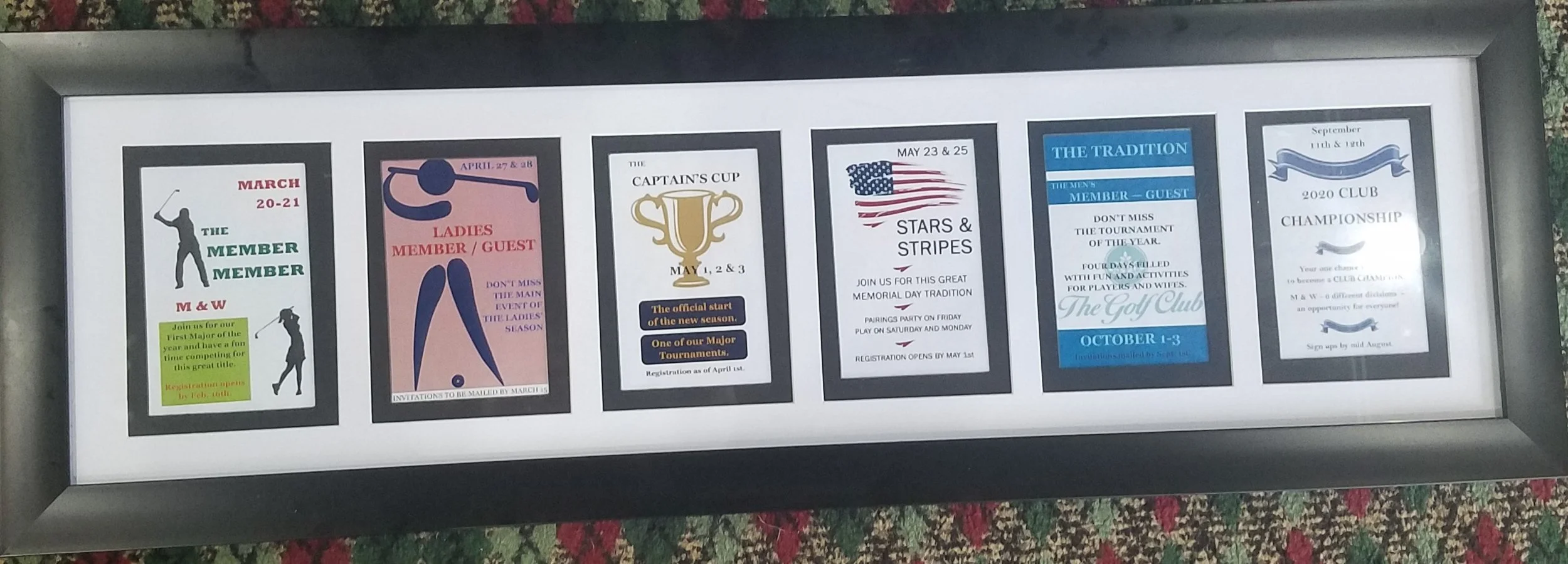EVENT MANAGEMENT
Fundamental Principles
Added Value
Inclusive & Fun
All the Participants Matter
Planning & Management
All-encompassing Action List
Golf Genius
Databases
Multi-Promotion
Sponsors & Vendors
Participation Apps.
Good practices for successful event management include meticulous planning, clear communication, proper promotion, and detailed execution. Memorable events will feature VALUE ADDED at significant levels.
Planning and preparation
Define clear objectives, to guide the planning process.
Understand our audience. Demographics, preferences, ages, skill level, etc. Our event calendar must be diverse, with different formats that include competitive tournaments, fun/social events, and instructional activities.
Establish a comprehensive budget. Account for all potential expenses and pursue a range of revenue streams, including sponsorships and donations.
Set a detailed timeline. Create a schedule of tasks, assigning roles and responsibilities to committee members or staff. For larger events, we start planning 6 to 12 months in advance to ensure everything is covered.
Assemble a dedicated team. Recruit a planning committee or staff with diverse skills, including members who understand the sport, have strong communication abilities, and are detail-oriented.
Event promotion and registration
Create targeted marketing plans. Promote events through multiple channels, including personalized emails, the club newsletter, a dedicated event website, and social media. Highlight the specific benefits of attending to drive engagement.
Streamline online registration. Use event management software to allow for easy online registration and payment. This simplifies the process for participants and provides accurate, real-time tracking for event organizers.
Highlight sponsorship opportunities. Create appealing sponsorship packages to help offset costs and enhance the event's value. Offer clear branding opportunities on-course and during the awards ceremony.
Attract diverse participation. For open events, use public marketing like social media ads and local publications. For member events, personalize invitations to make members feel valued.
Execution and day-of management
Communicate clearly with participants. Send reminder emails a few days before the event with all essential details, such as the date, time, directions, and registration information.
Have a smooth check-in process. Set up an efficient registration area with enough staff to handle the influx of participants. Provide a welcome pack with scorecards, rules, and any sponsored materials.
Manage on-course logistics. Ensure the course is in optimal condition with all necessary markers, signs, and equipment. Place refreshment stations strategically to keep players hydrated, and have volunteers available to help with scoring or rules.
Add engaging contests and activities. Incorporate fun, optional challenges like longest drive or closest-to-the-pin to increase engagement and fundraising. For non-golf events, include activities like silent auctions or themed entertainment.
Have a weather contingency plan. Identify alternative arrangements for bad weather, such as rescheduling protocols or indoor activities. Clearly communicate the plan to attendees and staff
Post-event follow-up
Solicit and analyze feedback. Gather insights from attendees, sponsors, and volunteers using surveys or direct conversations. Use this information to improve future events.
Send thank-you notes. A simple and sincere thank-you message to participants, sponsors, and volunteers shows appreciation and builds lasting relationships.
Deliver an event recap. Share photos, videos, and a summary of the event (especially for charity fundraisers) through the club's newsletter or social media. This reinforces the positive experience and generates excitement for future events.
Review and plan for the next event. Conduct a post-event debriefing with the planning team to review successes and challenges. This allows you to immediately apply lessons learned to your next event.
A golf club can promote events on social media by creating compelling visual and video content, leveraging platform-specific features, running interactive contests, and encouraging user-generated content. By executing a phased social media strategy, a club can build hype for an event well in advance, engage attendees during the event, and extend its impact afterward
Pre-event
Create event pages. Set up a dedicated event page on platforms like Facebook and a unique hashtag for the event to build a central hub for information and conversation.
Post teaser and behind-the-scenes content. Use short videos or photos to create a "sneak peek" of the event. Feature staff preparing the course, setting up decorations, or putting together prize packages.
Run a countdown. Generate anticipation with countdown graphics and reminders using Instagram and Facebook stories. Platforms allow followers to click "remind me" and share the countdown with their networks.
Highlight sponsors and partners. Showcase event sponsors with graphics or posts that tag their businesses. This adds value for sponsors and expands the event's reach to their followers.
Host a giveaway or contest. Offer a free round of golf, a pro shop voucher, or free entry to the event as a prize. Entrants can be required to like, share, and tag a friend to significantly increase engagement and visibility.
During the event
Post live updates and stories. Keep followers engaged with a live stream of key moments, such as the shotgun start, a special speaker, or the awards ceremony. Use Instagram Stories and Reels to share short, immersive videos throughout the day.
Share user-generated content (UGC). Encourage participants to post their own photos and videos using the event hashtag. Repost the best content to your club's official account to show the event through the eyes of attendees.
Recognize achievements in real time. Announce tournament leaders, contest winners, and other highlights as they happen. This adds to the excitement and keeps followers checking back for updates
Post-event
Post a highlight reel. Compile the best photos and video clips into an engaging reel or gallery post. This allows those who missed the event to see what happened and creates lasting memories for those who attended.
Thank participants and sponsors. Post thank-you messages that tag sponsors, winners, and key volunteers to show appreciation. This helps nurture relationships and encourages future participation.
Create an Instagram highlight. Save the best Instagram Stories from the event to a dedicated highlight on your profile. This allows the content to live on permanently and serves as a preview for future attendees.
Continue the conversation. Use a post-event survey or a social media poll to gather feedback. Ask members what they enjoyed most or what they'd like to see in future events to drive more engagement.
Platform-specific tactics
Facebook: Utilize its robust event-creation tools, which make it easy for users to RSVP, get updates, and share with friends.
Instagram: Focus on high-quality visuals like scenic course photos, behind-the-scenes video clips, and event highlights in the Stories and Reels formats.
LinkedIn: Promote professional networking events, charity fundraisers, and corporate golf outings. This platform is ideal for reaching businesses and professionals who book such events.
Paid advertising: Use targeted ads on Facebook and Instagram to reach a wider audience beyond your current followers. Target specific demographics, interests, and locations to promote the event to potential new members and clients.




